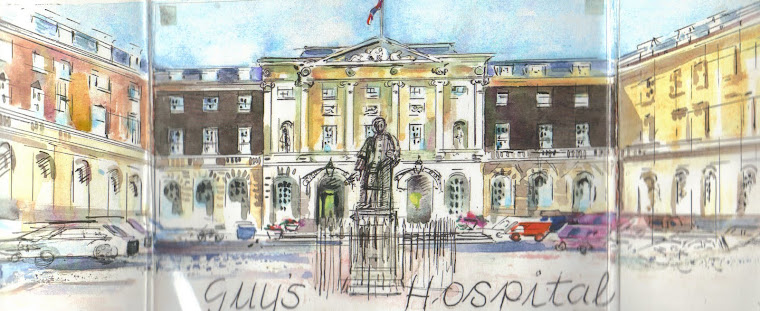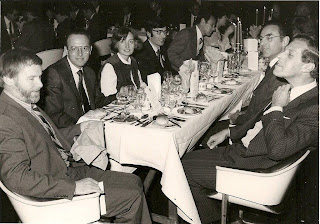

After house jobs at Orpington, Guys and Lambeth I spent a year as an assistant in a north Shropshire rural practice. This I decided was the career I wished to pursue but began to despair after many months searching for a suitable practice.Eventually I obtained a partnership in Shipston on Stour, Warwickshire on the borders of Gloucestershire and Oxfordshire and the northern limit of the Cotswolds. This was a four man rural dispensing practice with a Cottage Hospital just across the road from the practice premises. In the early days the hospital had a maternity unit ,operating theatre, casualty and x-ray facilities in addition to its 35 beds but as the years passed it changed its title to Community Hospital,the beds became mainly geriatric and the operating facilities and maternity unit ceased to exist.
As well as the practice I worked one day a week in the Orthopaedic Dept at Warwick and developed an interest in Sports Medicine. I also represented my colleagues on the LMC over many years.
I continued to play rugby football for the local club until I was 35 but decided when I couldn’t get out of bed on Sunday morning after a game or even worse not get into the car on Monday it was time to give up! I became President of the club shortly afterwards and remained in post until we played at Twickenham in 2003 in the final of the Junior Vase narrowly losing to Old Alleynians.
My leisure interests turned to mountain walking with some ice and snow climbing where necessary. Initially my travels were confined to the UK and Europe but I made my first of many trips to the Nepal Himalaya in 1975. I acted as the doctor and leader to several high altitude treks. My intention was always to go to Nepal in the Autumn when the weather was invariably good but in 1986 I was persuaded by three professional botanists to accompany them in the Spring to the Kanchanjunga area. The monsoon came early, our tents and equipment were permanently wet , my legs red from where the many leeches had managed to attaché themselves. Never again in the Spring!
With my first wife Brenda I had two daughters Katherine and Rebecca, now aged 49 and 47 and Katherine has given me two grandchildren . This marriage ended in divorce.
I met my second wife Sue in Kathmandu on one of my many trips to Nepal and subsequently we shared many exciting trips including a failed ascent of the Matterhorn and a successful ascent of Kilimanjaro on our honeymoon. Sue is a keen equestrienne and has extended my outside interests into breeding and showing top class Dartmoor ponies. Not to be outdone I acquired a small flock of Hebridean sheep.
We have a son George aged 20 who has inherited our love of sport. After A-levels he had a gap year in Australia. He lived in Sydney, worked for a publishing company which funded his travels around most of Australia and in his free time played league cricket and Aussie Rules football .He is now at Exeter University studying Politics with Spanish,but we have a feeling his heart is still in Australia and he may well return there. Having visited the country we really wouldn’t blame him.


















